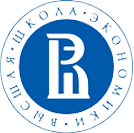The paper stresses that in many cases corruption is not a separate phenomenon, as it is often considered, but a part of an integrated system of a certain sector and/or region that is characterised by:
- the involvement of a great number of actors: in particular, a corruption system can include representatives of public bodies, including anti-corruption ones, private sector, non-governmental organisations, members of organised criminal groups, various intermediaries (banks, consultants, legal services providers and the like) and other participants;
- the existence of stable informal rules in parallel with formal norms or substitution of the latter by the former;
- the fulfillment of a certain political, economic or social function: corruption becomes a part of the system when its objectives are broader than personal gain, for example winning elections, securing an influence on policy, improving the privileges of the “in group”, fulfilling certain social functions and repairing dysfunctions in public governance, including the lack of goods, works and services provided to the population by the state, bureaucratic disorder or general lack of avenues to make the necessary decisions.
The indicators of systemic corruption are the following:
- Few convictions for corruption, when this low rate is inconsistent with evidence of how widespread corruption is;
- High allegations of corruption at elections;
- Consistently low levels of trust in institutions and government;
- Mismatch between formal and informal rules and practice;
- Corruption levels that tend to remain in sectors, even when there is a change of government;
- Continued under-performance (for example, failure to achieve performance targets);
- A general desensitisation to corruption.
This systemic character of corruption hampers considerably the effectiveness of anti-corruption measures.
In these circumstances, the accountability mechanisms are weak due to the fact that most people either engage in corrupt practices by taking corruption as a norm, being attracted by potential personal gain or being unable to counter political and/or social pressure or have no institutional alternatives. In turn, the growing number of participants of this system reduces the number of potential whistleblowers, compromises accountability mechanisms or favours their use by the corrupt in their personal interest and facilitates the use of personal influence to circumvent control and formal oversight mechanisms. As a result, trust in institutions declines, the effectiveness of anti-corruption performance falls and systemic corruption becomes ever more deeply entrenched in society.
Furthermore, in this corrupt system, the participants join their efforts to undermine anti-corruption effort, which often hampers the effectiveness of such traditional anti-corruption measures as enhanced oversight, increased transparency or improved anti-corruption legislation. The U4 experts stress that the persons responsible for the implementation of relevant measures and/or monitoring of their implementation are nearly always involved in the system and, as a consequence, assist its participants in circumventing anti-corruption measures or use them to protect their own interests and dealing with their “competitors”.
Moreover, the employment of conventional anti-corruption measures in these systems can lead to corruption being pushed to other areas rather than to its reduction.
To counter systemic corruption, the U4 experts recommend strengthening the potential of anti-corruption measures to adapt to systemic resistance by:
1. Increasing the effectiveness of functioning of sectors. The paper highlights that in order to increase the effectiveness of the fight against systemic corruption, it is necessary to shift the focus from decreasing the level of corruption to the improvement of the functioning of different sectors vulnerable to corruption, for instance, to improve the qualifications of and working conditions for teachers, ensure equitable supply of medications or cost-effective road building. To this end, it is necessary to ensure close coordination between the officials and other specialists in anti-corruption on the one hand and industry experts on the other also with a view to gathering as much research and information about corruption in a particular sector, then relating it to a broader set of sectoral priorities that should be outlined in national government strategies;
2. Taking account of the context. The U4 experts stress that the analysis of the context is important for developing effective anti-corruption measures, and the fight against systemic corruption should start with scrutinizing model corruption systems inherent in different sectors, their participants, informal internal rules and division of functions. This will make it possible to:
- understand what/who is to counter, i.e. what actions allow implementing corruption schemes and what persons take these actions, as well as detect potential “allies” of anti-corruption reforms. These data can be obtained throughout the social networks analysis or case-studies with the involvement of experts;
- Define the most probable “entry points” for initiating changes. To this end, mapping of formal and stable informal norms and expert interviewing can be employed;
- Define global goals to the achievement of which the corruption system is aimed and try to forecast which future changes will most probably encounter resistance of the participants of the system;
3. Enhancing capacities of actors in different sectors to overcome the limitations of corruption systems. In order to counter corruption, these actors should have the possibility to:
- take collective action: the U4 experts believe that corruption systems cannot cover all actors in a sector, the processes implemented and active institutions, which leaves room for anti-corruption reforms. The association of such participants that are not involved in corruption interactions will enhance the effectiveness of anti-corruption performance, for instance, due to increased transparency and accountability of processes or promotion of new norms. In this context, the state can facilitate collective action by providing financial or technical support to create long-term infrastructure, including, “safe spaces” to build trust, encourage discussions and negotiations etc.;
- reduce the vulnerability to corruption by eliminating dysfunctions: to understand and eliminate these dysfunctions in sectors, the development of specific action plans is required. In the field of taxation, for example, where dysfunction manifests itself in the lack of a clear and functional tax collection system, which increases active bribery in the private sector to avoid fines, digitalisation of tax administration, i.e. the elimination of the very cause of the respective dysfunction, can turn out to be more efficient than increased accountability or another conventional anti-corruption measure.
The report also outlines a number of additional circumstances that are to be taken into consideration in planning the fight against systemic corruption:
- it is impossible to rapidly eliminate corruption systems and, as a consequence, it is needed to go through several cycles in the adoption of anti-corruption measures, i.e. planning, implementation and “reflection”;
- there is a need for long-term planning and presence of practitioners on the ground, as well as active engagement of the latter in the implementation of reforms;
- separate work areas regarding anti-corruption and other reforms must be broken down: the development of regulation in specific sectors and anti-corruption activities must be undertaken jointly rather than co-exist as two non-intersecting lines of the public strategy.

